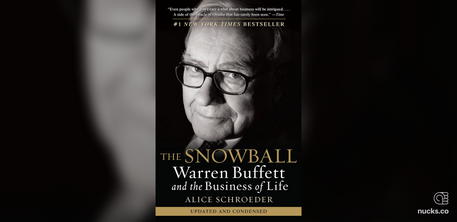Overview
Rating: 9/10
Read More on Amazon
High-Level Thoughts
As an entrepreneur, you need to be learning. The lessons taught via Uber’s history about the importance of culture and power are valuable. Companies built without great foundations can still fall. This book stands as a warning to all founders, so they don’t make the mistakes that Travis Kalanick did while building Uber. Remember, money and power aren’t everything.
Key Takeaways
- Winning at all costs has high costs.
- You don’t have to be the first in a market; you have to be the best.
- Dangerous startup culture compounds with growth.
Summary Notes
How Did Travis Kalanick Start in Entrepreneurship?
Travis started an SAT preparation service called “New Way Academy” at the age of 18. He partnered with the father of one of his classmates, which surprisingly ended up working well.
He was a smart kid, scoring only 20 less than perfect on the SAT himself. That led him to later double major in economics and computer science.
Travis Kalanick’s First Company: Scour (1998-2000)
Kalanick dropped out of UCLA and moved in with his parents to found Scour, a peer-to-peer file-sharing service. Besides giving up the idea of romantic relationships, he also abandoned a salary. In 2000, the MPAA and three dozen other organizations brought a $250 billion lawsuit against the company for copyright infringement. One of its investors turned on the company as well, giving Kalanick a deep distaste for venture capitalists.
Lesson: Never trust a venture capitalist.
Travis Kalanick’s Second Company: Red Swoosh (2001-2007)
Travis’ second go at starting a company wasn’t much easier than the first. Red Swoosh was another peer-to-peer file-sharing service that allowed users to share large videos and images. His employees disliked working for the company, and after months of not being paid, his engineers left. During that period, an employee took from the company’s payroll tax withholdings, which left Kalanick liable for tax fraud. This event, along with the previous mishap at Scour, made it difficult for Kalanick to trust others.
Kalanick managed to eventually sell the company to Akami for $19 million, netting nearly $2 million for himself after taxes.
What Technology Changes Led to Uber?
In 2002, Amazon’s launch of AWS made it far easier for entrepreneurs to build startups. That, along with Apple’s App Store, opened up opportunities for people to use phones to do things apart from making calls.
The Cult of the Founder
Uber was founded in 2009, a time when founders were revered above all else in Silicon Valley. The mentality around founders was that they are remaking and improving the world, so employees should go above and beyond to please them. If that means working 12 hour days, so be it. This was a lifestyle to be celebrated.
Uber Was Not Travis Kalanick’s Idea
Garrett Camp, a well-known and successful entrepreneur, was annoyed that he couldn’t catch a cab in San Francisco. He sold StumbleUpon to eBay for $75 million after raising only $1.5 million in venture capital, but convenient transportation was one of the few things his newfound money couldn’t solve.
Garrett became obsessed with the idea of Uber, a black car service that would be a market leader in private transportation. He shared it everywhere he went, even replacing the word “great” with “Uber” in his vocabulary. It took more than one conversation with Kalanick to convince him that Uber was a good idea.
Kalanick’s sale of Red Swoosh didn’t make him the next Mark Zuckerburg, but it did allow him to buy a million-dollar apartment, which he consequently named his “Jam Pad”. It was there that he would jam on business ideas with friends. Camp happened to be one of those friends, and after some convincing, Camp persuaded Kalanick to join him as CEO of their next great company: Uber.
How Venture Capital Works
A job in venture capital doesn’t seem difficult, but it is. Venture capitalists have an onslaught of meetings with founders, CEOs of large businesses, financial backers, journalists and more. They have to sift through the noise to discover which startups will provide big returns for their LPs, or limited partners, in the VC firm. LPs typically expect a return of at least 20-30 percent in around 10 years. Although they are investing OPM (Other People’s Money), it’s a stressful job.
Startups that accept venture capital money do it through rounds. They begin by accepting seed capital, known as a “seed”, of tens of thousands to hundreds of thousands of dollars. Subsequent rounds are named by the letter: Series A round, Series B round, and so on. Two liquidity events where an investor will receive their investments back are through an IPO (initial public offering) or an acquisition.
Uber Employees Were Empowered
Kalanick completely trusted his employees with little oversight. He let each city’s general manager run their city as though it was their company. Seven-figure promotional campaigns were allowed off of hunches and personal spreadsheets.
Crushing the Competition: Taking out Lyft and Sidecar
Kalanick received a tip from Mark Zuckerberg that Facebook’s employees loved a new startup called Sidecar. Along with that, Zimride had just pivoted to become Lyft and they offered peer-to-peer rides to the public. At the time, Uber still only catered to the wealthy with expensive ride options. Kalanick jumped into the offensive. They called on legislation to try and remove or stop the two competitors. It was a tough battle to fight because consumers loved the pink mustaches found on the front of Lyft’s vehicles.
“Super Pumpedness”
Travis Kalanick based an employee’s performance on being super pumped. Being super pumped meant that the employee was working with a do-whatever-it-takes attitude to move the company forward. Some of the best VC’s in Silicon Valley thought Travis should slow down.
What did Travis Kalanick do after being fired from Uber?
He left San Francisco for Florida where he would pay no state income tax. He became well known as part of the “three comma club” (billionaire) and enjoyed his time at luxury parties on private yachts. He has since started a new company called Cloud Kitchens.
When Kalanick was ousted, what changes were made to Uber?
Tipping was added to the app, more security measures were put into place, and sexual harassment problems were looked into seriously. Beyond that, a true Chief Financial Officer was hired and the financial department was broadened.
Uber’s IPO
As they tried to save the company, Uber went public on Wall Street and immediately watched their stock price drop. By the end of the day, Uber lost more than any other American public offering since 1975. It was a total failure.
Uber’s Biggest Mistakes
- Uber built a secret system they referred to as “Greyball” to evade authorities and legislation in new cities that they entered. It was a fake version of the app, populated with ghost cars, that would be shown to authorities so they couldn’t find real Uber drivers.
- Uber evaded Apple’s security practices and tricked the company into publishing their app.
- Kalanick thought that he could conquer the China market even though other companies such as Google have failed to do so.
- Uber turned a blind eye to well-performing managers that would treat employees poorly. All they cared about was that employees had a “champion’s mindset”. Even sexual misconduct cases were given a blind eye for value-enhancing managers.
- Uber had a security breach of more than 50,000 licenses and driver information that they didn’t publicly share for nine months.
- More than 16 drivers were murdered in Brazil before they improved the identity verification process and security in the app.
- Kalanick helped Levandowski leave Google with self-driving secrets and tried to use them to beat Google at its own game with self-driving cars. Several major lawsuits came from this, which didn’t help Kalanick’s or Uber’s images.
What Would I Change About the Book?
- I would remove repetitious points from the book.
- It would be nice if physical descriptions of characters were limited to people like Travis Kalanick, who play a major role in the story.
Want to Read More?
Other Reviews
'Super Pumped: The Battle for Uber' traces Travis Kalanick’s trajectory from floundering startup founder to the envy of Silicon Valley to the epitome of tech evil. And despite his much-publicized fall from grace, the book reveals jaw-dropping new lows. https://t.co/SA5aHkLEKS
— WIRED (@WIRED) September 4, 2019
In "Super Pumped: The Battle for Uber," @MikeIsaac details the company's remarkable rise and the misdeeds that forced the resignation of its CEO, Travis Kalanick.
— Here & Now (@hereandnow) September 3, 2019
🚗 ⬇️https://t.co/6hd9aoCMlv



